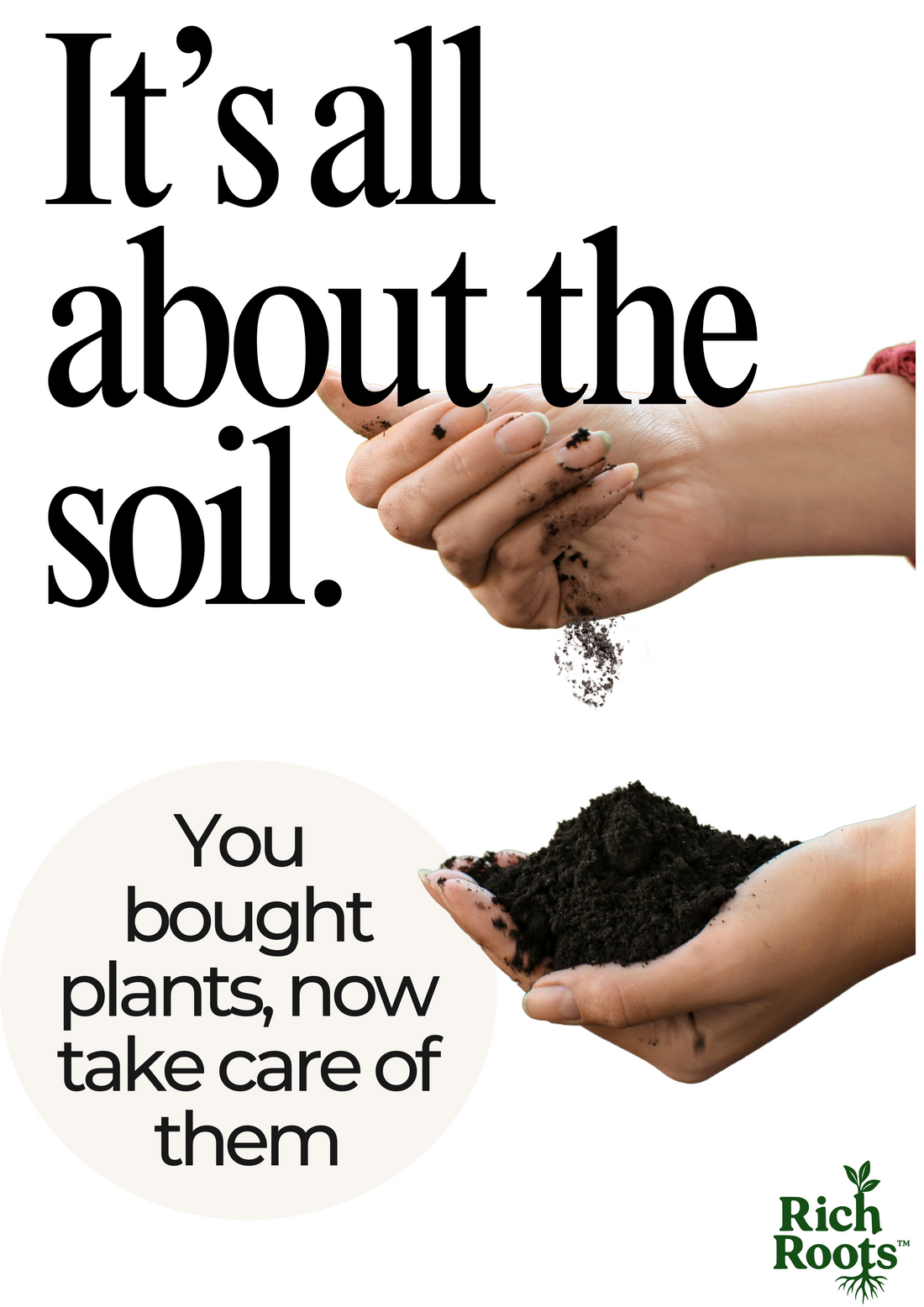
Why Frass Fertiliser is the Future of Soil Health
Share
TL;DR
Mealworm frass is a clean, natural fertiliser that feeds soil life, boosts plant immunity, and keeps gardening truly circular. It’s packed with gentle organic nitrogen, chitin, beneficial microbes, and active carbon – ready to use straight from the pouch, no composting needed.
🌿 Soil-Friendly, Planet-Friendly
Soil isn’t just dirt – it’s the living foundation of every thriving garden and farm. Yet decades of continuous cropping, heavy synthetic fertilisers, and routine pesticide use have left many soils depleted and lifeless.
Mealworm frass offers a smarter path forward. Made by insects, not factories, this low-odour, microbe-rich fertiliser can recharge tired soils, strengthen plant defences, and shrink your reliance on chemicals – all in one sprinkle.
What Is Mealworm Frass?
Frass is the naturally dry, powder-fine mix of mealworm droppings and shed exoskeletons produced as Tenebrio molitor larvae grow. Thanks to careful indoor rearing on wheat bran and veggie off-cuts, it’s:
- Virtually odour-free
- Free from pathogens and heavy metals
- Ready to use – no compost pile or “aging” required
In other words: manure without the mess.

Source: Rich Roots Fertilisers | Hand Holding Sand-Like Raw Mealworm Frass
Why It Works (Science Made Simple)
Every gram of frass delivers a unique blend of nutrients and bio-active compounds:
| What’s inside | Why it matters |
|---|---|
| Organic nitrogen (uric acid + microbial protein) | Slow, steady growth without root burn |
| Balanced P & K | Supports root energy and flower/fruit set |
| Chitin from insect skins | “Primes” plant immune responses against pests & stress |
| Active organic carbon | Fuels beneficial microbes that cycle nutrients |
| Soil-friendly microbes | Enriches the microbiome and suppresses disease |

Source: Poveda 2021.⁴
Because nutrients are locked in organic matter, they release gradually – feeding plants over weeks while reducing leaching into waterways. And with a gentle pH around 5.8-6.4, frass even helps buffer alkaline soils.
Soil-Friendly, Planet-Friendly
Our frass comes from a circular, low-footprint system:
- Mealworms convert clean plant by-products into protein and frass.
- Frass goes back to the soil, closing the nutrient loop.
- No synthetic additives, no excess water use, no greenhouse-gas-heavy livestock.
Sprinkle, water in, and let soil biology handle the rest – no pong, no hassle, no synthetic nasties.

Source: Amorim 2024.²
Proof in the Plants
Research shows frass can match or outperform conventional NPK fertilisers across a range of crops:
- Barley & beans – Better germination, root growth, and nutrient uptake. ¹
- Ryegrass – Higher biomass and a livelier soil microbiome. ¹
- Stress trials – Plants primed with chitin show greater drought, salt, and pest resilience. ³ ⁴

Source: Nyanzira et al. 2023.⁵
And remember: these results come without synthetic inputs – just insect power.
Frass feeds soil microbes, fortifies plant defences, and keeps nutrients where plants need them.
Not sure how to use frass? We've got you covered – tips and more 👉 Read our "How to" guide
More worm poop questions? We’ve answered them – no smell, no chemical nasties, no worries 👉 Read our FAQ guide
Ready to Give Frass a Go?
Choose the size that suits your patch:
- 🌱 10 g Sample Sachets – Perfect test-run for pots.
- 🌿 160 g Raw Frass Pouches – Everyday feed for balcony beds & veggie boxes.
- 🪴 480 g Packs – Great value for keen growers.
- 👉 Browse All Products
Follow us on Instagram: @richrootsfertilisers
References
- Houben, D. et al. (2020). Potential use of mealworm frass as a fertilizer: Impact on crop growth and soil properties.
- Amorim, H. C. S. et al. (2024). Insect frass composition and potential use as an organic fertilizer in circular economies.
- Blakstad, A. et al. (2023). Frass from yellow mealworm (Tenebrio molitor) as plant fertilizer and defense priming agent.
- Poveda, J. (2021). Insect in the development of sustainable agriculture. A review.
- Nyanzira et al., 2023 – Analysis of Frass Excreted by Tenebrio molitor for Use as Fertilizer.